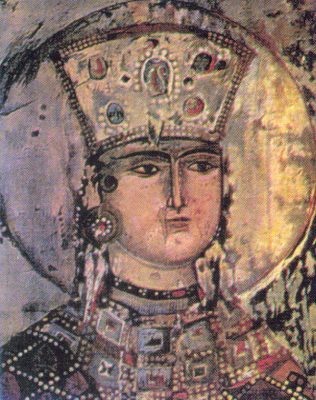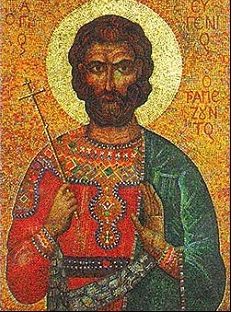List of Greek settlements in the Sancak of Trebizond
https://pontosworld.com/index.php/pontus/settlements/175-trapezunta
H.F.B. Lynch: The Empire of Trebizond
The empire of Trebizond takes its place in this great tragedy of history when the end is already in view. In the same year and the same month in which the Latins took Constantinople and the nobility of the imperial capital fled to the cities of Asia (April 1204), two youthful scions of the illustrious House of Comnenus appeared at the head of a body of Georgian mercenaries before the gates of Trebizond. The Comneni, whose name perhaps reveals an Italian origin, emerge into the light of history in the latter part of then tenth century, from a private station among the Greek nobility of Asia, where their hereditary status was situated near Kastamonu, a town in the interior (…).

Their names were Alexius and David; and they were assisted in their enterprise by their paternal aunt, Thamar, the offspring of their grandfather and a Georgian lady. The political condition of Trebizond during the interval between the murder of Androicus and the Latin conquest of the capital is not definitely known; but the Greek city was probably feeling the pressure of the neighboring kingdom of Georgia at the time of advent of the two Greek princes. The prospects of relief, on the one hand, from the pressure, and, on the other, from dependence upon the rotten court of Constantinople under the hopeful rule of an illustrious family, must have operated as powerful inducements to the townspeople to welcome the new regime. Alexius Comnenus is accepted as master of the city, and his rising fortunes attract to his victorious standard some of the noblest of the refugees from the capital, flying to Asia before the Latins. Others range themselves round the person of Theodore Laskaris in Bithynia; and two rival Greek or Roman empires are established upon Asiatic soil, that of Nicaea, or Nice, the capital of Bithynia, and the empire of Trebizond.
The successors of Laskaris fought their way back to Constantinople, which was recovered from the Latin barons in 1261. A much less splendid fate was reserved for the family of Alexius Comnenus; yet the little empire on the Black Sea survived the restored Byzantine Empire; and a space of nearly a hundred years separates the fall of the last of the cities of the interior (conquest of Philadelphia by the sultan Bayazid in 1390) from the overthrow of the rule of the Comneni at Trebizond (1461). During a period of over 250 years these petty Greek princes contrived to elude the storms of the Mussulman conquest behind the wall of mountains imposed between the interior and the coast. Sometimes as vassals of the Oriental dynasties, at other times in a state of independence, they ruled over the beautiful city and a narrow strip if seaboard of varying extent. Their possessions included a part of the Crimea, of which the tribute was conveyed across the expanse of waters in the imperial galleys. Proud of their pompous titles of Grand-Comneni and Emperors of the Romans, or lords of all Anatolia, Georgia, and the Transmarine, they supplied their deficiencies in real power by elaborate ceremonials, and substituted the gorgeous cult of their patron saint, Eugenius, for the devotional exercises of the

Christian religion. (…) Their territory afforded a home and holding ground to commerce; and, when the land routes through Asia Minor fell into disuse owing to the increase of anarchy, Trebizond became an emporium of the trade with the further Asia, diverted to the more secure avenue of the Armenian plains. This trade was conducted with great spirit by the Genoese from their factories at Trebizond, until Grand-Comneni, Italian merchants, and all the apparatus of civilization was swept away by the Ottoman sultan, Mohammed the Second (1451-81).
This type of Oriental exclusiveness came marching across the mountains some years after his conquest of Constantinople (1453). The citadel of Trebizond was given over to the Janissaries, the palace to a pasha. (…) Only one third of the inhabitants of Trebizond, and these the dregs of the populace, were suffered to remain in their native city. The remainder were compelled to emigrate, and their estates were confiscated.
Quoted from: Lynch, H.T.B.: Armenia: Travels and Studies. Vol. One: The Russian Provinces. Third Printing. Beirut: Khayats, 1990, p. 34ff.